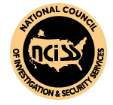TV shows and movies have given the public a fictionalized view of what surveillance is and is not in the PI world. Let’s get down to the truth.
What is Surveillance?
Surveillance is the observation of a person or set of people, places or things (subject of the investigation) to gather pertinent details about the events and interactions that occur related to that subject. Surveillance might be used in a number of different types of cases, including criminal cases, business fraud cases, custody and divorce cases, Worker’s Compensation cases, incidents of vandalism, cheating/adultery investigations and missing persons investigations.
What surveillance is not is just as important as understanding what surveillance is. Surveillance is not breaking into and searching a person’s home, office or vehicle. Surveillance is not wiretapping phones or planting bugs in private locations. A warrant is needed for these kinds of activities. While PIs can access some data that the general public cannot, they still have to work within the law when gathering information via surveillance.
Types of Surveillance
There are four main types of surveillance that a PI might perform to gather info related to a case. Let’s take a closer look.
Interviews
Known for being “old-fashioned PI work”, PIs can perform surveillance by interviewing associates of the subject of the investigation or other parties that could have knowledge of use to the case. For example, in a missing person case, a PI might interview their family and friends to uncover details that might lead to finding them. In a business fraud case, a PI might interview different employees of the business to discover how the fraud is occurring.
Electronic
Electronic surveillance involves using electronic means to observe a subject. In this case, a PI might monitor their social media accounts, observe their cell phone use, perform various types of background checks, monitor their use of the internet or other electronic activities. Again, this is a tricky area as the PI has to be careful not to violate a person’s legal rights to privacy.
Technical
Technical surveillance includes the use of photography, video recordings and voice recordings. State laws differ regarding how many parties must know a recording is taking place however, anything said in a public setting is usually fair game for PIs. Other forms of technical surveillance include surveillance cameras at a business and dashcams or body cams used by PIs and law enforcement officers.
Physical
Physical surveillance is what most people think of when they imagine a PI doing surveillance. Physical surveillance is following or watching the subject of an investigation and documenting their activities. Typically, the PI will “hide in plain sight” or blend into the public surroundings during physical surveillance but it can also involve discrete stakeouts, using disguises and other investigative techniques to keep the PI’s cover in place while they gather their observations.
Surveillance can be a big part of a PI’s job, depending on the type of case. Like all work a private investigator does, there are legal requirements they must follow while performing surveillance. Understanding what surveillance is and is not can help you separate fact from Hollywood fiction.










